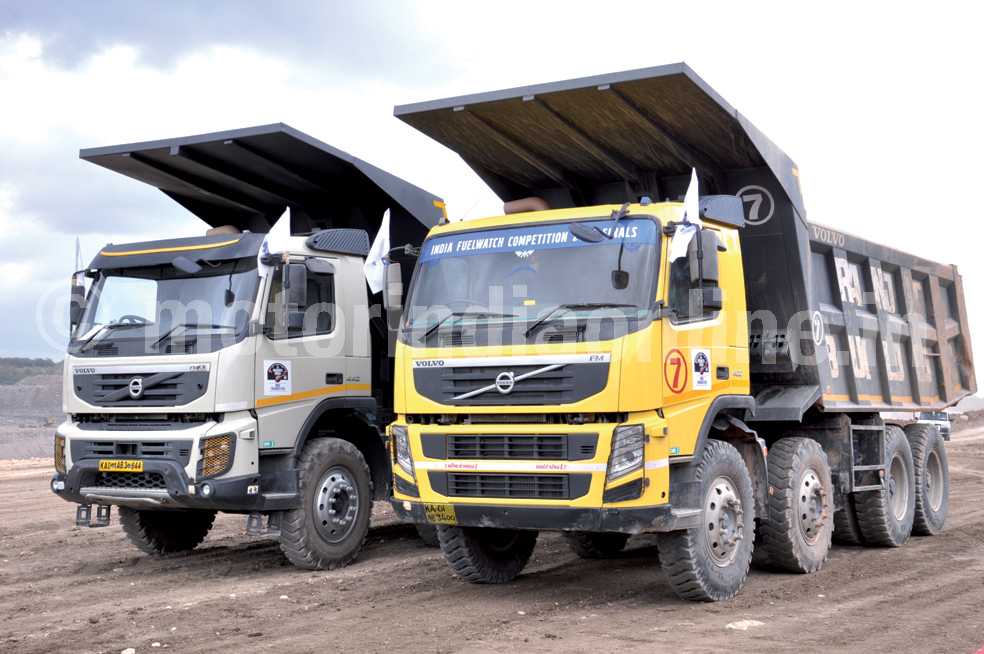
More than 50 per cent of the operational costs in the mining sector vis-à-vis payload transport thro’ trucks is accounted by fuel and hence it is natural for both the customer and contractor always look out for the avenues to economise costs on all possible fronts, focus their major attention on the fuel factor. Fuel cost reduction thro’ efficiency improvement is therefore vital for controlling both operational costs and as well minimising the environmental impact due to pollution. As a leading truck manufacturer who works closely with customers to support their cause, Volvo has strived to improve the fuel efficiency of its trucks; and the three significant initiatives taken on this front being product upgradation thro’ technology, imparting critical maintenance aspects and driver skill betterment, last one being major contributory factor which accounts close to 30 per cent on the fuel efficiency scale. To promote awareness of this aspect amongst customers, drivers and other stakeholders, Volvo recently held its India FuelWatch 2013 competition, the fourth edition, on June 11th and 12th at WCL Coal Mine in Naigaon, near Chandrapur, Maharashtra.
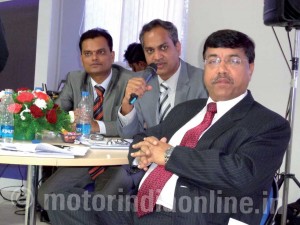
In order to highlight the various aspects of the competition held and efforts by the company to promote the fuel watch initiative, Volvo had organised a media interaction at its Hosokote factory, near Bangalore. The Volvo team of senior executives headed by Mr. A.K. Birla, Executive Vice President – Sales, Marketing & Aftermarket, VECV, supported by Mr. Sree Rama Rao, Senior Vice President – Aftermarket & Soft products, VECV, and Mr. G.V. Rao, Vice President – Volvo Group Product & Brand Strategy, India Joint Ventures, Volvo India Pvt. Ltd., along with other team members interacted with the media representatives on various aspects ranging from the importance of fuel efficiency, driver skill, technology to new product range, competition et al.
An introduction to the Fuel watch competition was given by Mr. Rama Rao. He indicated that Fuel watch initiative was started in 2010. “Volvo, as you are aware is a technology leader and works incessantly to improve the performance of its trucks for the customer’s benefit. Despite all product improvement for better fuel efficiency, the truck is only as good as the driver in charge – for only thro’ right driving skills of the person at the wheel, the customer can get the full benefits in savings of operational costs. In the initial years, Volvo was focussing in providing high performance trucks and training drivers but realised that the significant benefits can accrue only by actively engaging the drivers in the fuel saving initiatives. Volvo as a worldwide group decided to initiate the driver engagement program and in India the same shaped up as a Fuel watch competition in 2010. The Fuel watch competition engages the drivers operating the trucks not on test tracks but at application sites; and Volvo having a strong presence in the mines, decided to make the test run at one of these locations”, commented Mr. Rama Rao.
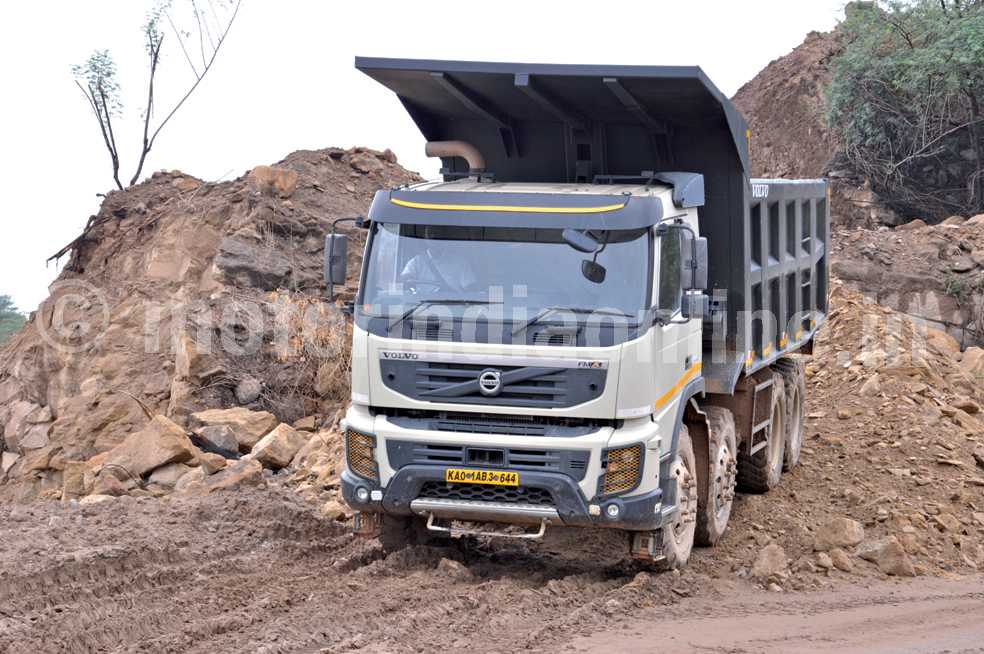
He added: “The competition highlights the importance of good safe driving practices and promotes thorough understanding of the latest technologies of high performance Tippers to achieve the best man-machine output”. He also pointed out to the improvements of truck and engine specs from 7 ltr. to 9 ltr. and then to the 13 ltr. engine ; and the current tipper truck, a manifestation of the development efforts being FMX 440 (8X4, 12.8 ltr. in-line 6 cylinder, Euro III, 440 Hp, 2200 Nm) superseding the earlier model FM 400”.
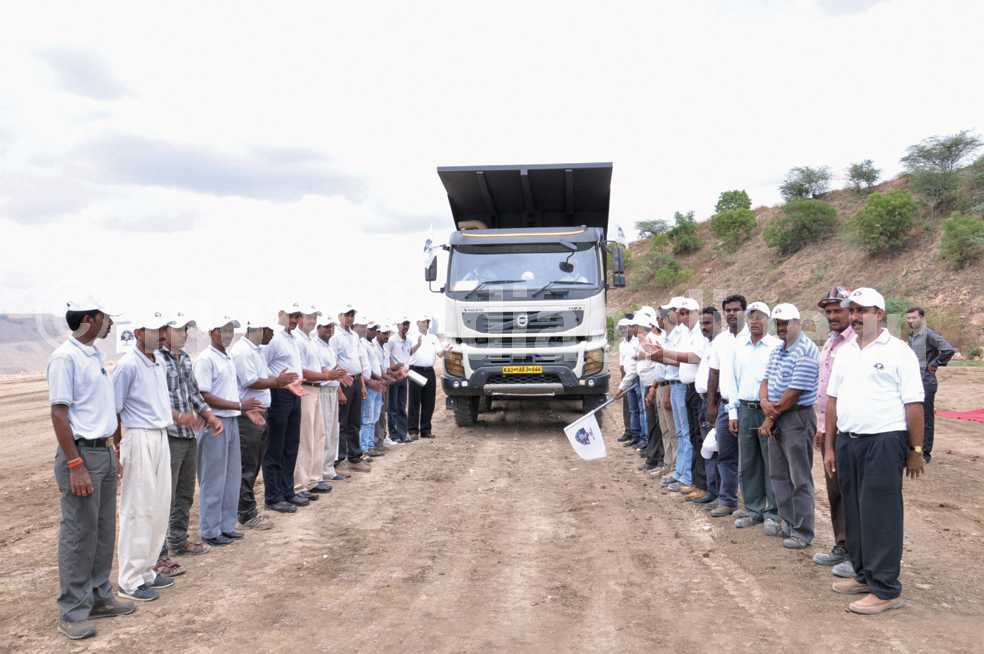
Mr. A.K. Birla who delivered the main address remarked: ”Fuel watch competition is a part of Volvo trucks initiative to educate drivers and create awareness vis-à-vis the importance of best driving practices to improve fuel efficiency, reduce fuel costs and increase profitability. Fuel efficiency and vehicle productivity are critical considerations for fleet operations in mining area. At Volvo trucks, special emphasis is given to superior driving skills because it plays an important role in achieving better fuel efficiency and increased profitability. Our fuel watch initiative helps our customers to get the very best out of the trucks and lower their operational costs. Fuel reduction is vital both economically and environmentally as economy and environment go hand in hand”. Giving the details of the tests, he added that both FM 400 & FMX 440 trucks were used in laden and unladen conditions by 16 of the best drivers selected from different regions of India and the test results threw up some interesting results.
Explaining the details of the tests and results, Mr. Birla said: “Every drop of fuel conserves natural resources and reduces emission and goes well with the Volvo’s core value of environment care. FMX 440 is the result of product upgadation to meet higher fuel efficiency and Volvo has achieved about 10 per cent higher fuel efficiency in the new product offering; while ensuring proper maintenance procedure can improve efficiency by another 14 per cent, the significant impact can be made if the driver skill is improved as the same accounts for about 30 per cent viz., even a marginal improvement on this front can have significant impact on the costs”.
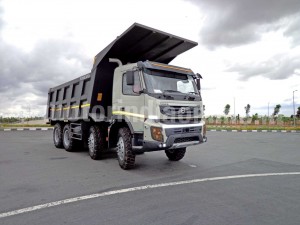
Illustrating the above points he pointed out: “In the fuel watch competition, the variance between the top and bottom drivers was as high as 24 per cent; in the test conducted the cumulative average fuel efficiency achieved by the top driver was 1.98 Kmpl while the one at the bottom of the list achieved 1.60 Kmpl. Both had driven similar trucks under identical mine operating conditions and hence the compelling need to focus on the driver skill improvement. To highlight the cost implications, consider the possibility of skill improvement by 10 per cent; for a typical mine fleet of 50 trucks doing a distance of 5 km per trip and 3 trips per hour, 20 hrs operation/day and considering fuel efficiency of 1 Kmpl, fuel consumed by the fleet would work out to 15,000 ltr. per day! For 10 per cent improvement in fuel efficiency due to driver skill would translate as saving of 1,500 ltr./day!; now considering the cost of fuel and 365 days operation would result in annual savings of Rs. 2.72 crore for the company! Well the companies are impressed and as well shocked by the results and have understood the need improve the skills of the drivers on a continuous basis”.
He also added: “Driver skill can be improved by imparting good driving methods of adhering to steady speed, staying in the green band of economical speed for max fuel efficiency, monitoring the truck data after every trip and making necessary adjustments. Further more, operating in a safe, cool and comfortable cabin ambience also contributes to his better performance. Well, in the fuel watch competition the driver who wins the competition will be sent for Volvo Asia competition in Australia during Oct. 2013; and if he wins there, would be sent to Sweden for the global competition planned during 2014. The initiative is having the desired impact and the customers are willing to address this issue on priority basis”.
The interactive Q&A session followed next and the senior executives replied with aplomb to the diverse queries and points directed to them – read on for excerpts from a lively session.
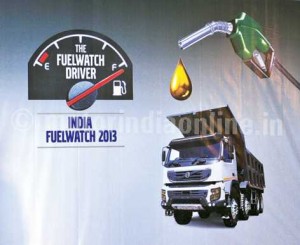
Has Volvo trained all the 16 drivers in the competition? Why is there such a big variance?
“The variance of 24 per cent in fuel efficiency surprised one and all; but this is where the application of learning skills really comes into the picture. It is one thing to learn in the driving school but to keep on applying it at actual site conditions without going back to the old driving habits is what determines the operational success and profitability. Even amongst the best of drivers chosen from different regions, the variance is high and one can hence readily deduce as to what extent skill betterment in a typical/average driver is going to contribute to operational productivity”, says Mr. Birla.
“Professional driving is still not an attractive vocation and hence to motivate the drivers and engage them in the exercise is of utmost importance for improving the operational profitability. As regards motivation of drivers to apply their skills on a continuous basis, it is important to link the variable wages to fuel efficiency. Some customers have bought our arguments and started implementing it either linking driver’s performance to fuel saved or to reduction of maintenance costs. Though truck technology and good maintenance practices are also key factors, driver skill gains importance because of the steep variance it can cause to the costs of operations”, adds Mr. Rama Rao.
Do you have any training program for the construction sites and how do you wish to address the opportunities in the segment? What are the modifications done in the engine to withstand arduous site conditions?
“Volvo has a strong presence in the mining segment and currently the operational management support program is oriented to the mining sites and selectively to ODC segment. It may however be noted the drivers are imparted the skills thro’ the driving school and they are expected to apply these at any operating site to maximise the returns for the customers. Volvo trucks come with robust technology to withstand abuses at site and the filtration system is designed to give the best results; when these trucks are taken out of mining operations after the useful and economical service period, we have seen that none of the fuel injectors has ever been replaced! Typically the mining trucks operate for about 5,000 hrs per year and taken out of service after say 25,000 to 30,000 hrs before getting deployed for other medium/light duty applications”, indicates Mr. Rama Rao.
Can you spell out the market size for Volvo range trucks, the company’s market share and business prospects?
“Volvo trucks is the most preferred truck brand in the premium European heavy duty market with engine capacity higher than 400 HP. Volvo has a market share in excess of 60 per cent and today about 6500 trucks are in operation – about 4500 trucks for off-road mining operations, and 2000 trucks on road as tractors for ODC transport. Volvo has supplied during the 15 year period since rolling-off the first truck in 1998, about 9000 trucks. Typically 80 per cent of Volvo tippers get deployed for mining operations and 20 per cent for on road ODC transport that essentially comprises project cargo”, answers Mr. Birla.
“The CV sector has definitely gone thro’ a bad patch for the last couple of years and Volvo is no exception to this economic reality. But we see encouraging improvement signs now and hope to sell around 700 trucks during this calendar year. We have already 30 per cent growth rate compared to last year and Volvo’s best performance till date has been 1100 trucks in 2010. In the ODC segment, the market is depressed due to delays of various infrastructure projects, power plants, etc., and also there is excess capacity. Hence we see the immediate growth prospects for the company in the mining sector and logically our focus on it”, explains Mr. Birla.
Could you brief us about driving school program and number of drivers trained?
“Volvo began training drivers at its Hosakote factory, Bangalore driving school from 1997, even before the first truck rolled out. Totally 35,000 drivers have been trained till date and from 2009, training is imparted to drivers also at application sites. Currently 6000 drivers are trained per year, 50 per cent from B’lore school and rest at customer sites and till date about 10,000 drivers have been trained at sites. Typically the training session lasts for 5 days and there are no dropouts. Theory and practical training are combined and only professional drivers with about 3 years of driving experience are taken for the training course; and necessary skills imparted not for driving but driving a Volvo truck!” remarks Mr. Birla.
Does Volvo undertake reconditioning of trucks?
“Yes and the initiative started from the year 2012 under the program called remanufacturing and renovation. Essentially the trucks after their useful life of 30,000 hrs in mining applications are considered for the reconditioning and deployment in other applications like coal transport from ports/railway siding to customer sites. Mining customers invariably deploy these reconditioned trucks because of the cost factors for their other applications. Volvo has been renovating components and aggregates as a program from the year 2010. Refurbishment of trucks bumper to bumper has been a recent initiative to meet the customer requirements”, adds Mr. Rama Rao.
Can you highlight the service support to customers and the revenue data?
“Volvo owns more than 80 per cent of the dealerships and provides warranty service support at more than 180 locations. Different layers of service support are provided and as per customer needs also thro’ container workshops at remote locations. The container workshop is easy to set-up and dismantle and can be transported to customer locations as per project requirements. These modular structure workshops can vary from 1 to 4 containers depending upon the type of service support needed by customers; and currently 10 container workshops are operational at sites. Revenue from non new truck sales in Volvo Group is about 30 per cent and in India this can be as high as 40 per cent of the total turnover. The service revenue includes apart from service and spare parts also several value added services like providing centralised lubrication system for performance enhancement, container workshops, service support along with vehicles as per needs etc.”, points out Mr. Rama Rao.
Will you specify the typical body sizes and applications?
“For mining applications in transport of overburden with rocks/boulders, Volvo provides 18.7 cu.mt Rock bodies to withstand loading impacts. For coal transport the bodies are made from st52.3 and other grade steels – 32 cu.mt for washed coal from washeries to customer sites/railway siding and 29 cu.mt for raw coal. Volvo is also examining other applications in the tipper segment like handling varied bulk materials encountered in ports, quarrying, hydel power projects and tunnels. Customised solutions are worked out depending upon requirements including providing a shorter wheelbase for turning within constrained work spaces and providing special bodies for sticky material and lignite mining”, details out Mr. G.V. Rao.
What are your viewpoints on driver shortage looming large on the CV sector?
“It is not prevalent in our segment and we have not encountered vehicles standing by for want of drivers. Our focus area is on essentially on the mines and typically the customers have a fleet strength of 35 to 100 trucks running for the operations. Most of the application sites are in remote areas, away from cites/towns and the customers hence source the drivers locally. The incentives for the selected drivers in the applications are many viz., transport distances are around 5 km and this means they can stay with their families unlike in the highway transport where the drivers may be away from their families for weeks together. Also the cool ambience of the cabin amidst the oppressive and difficult external conditions, variable wages/incentives keep them stay put in the job. Invariably the customers start driving schools in the area to meet their requirements of drivers and upgrade their skill and this means ready availability of skilled drivers and the shortfall if any is readily met”, summarises Mr. Rama Rao.